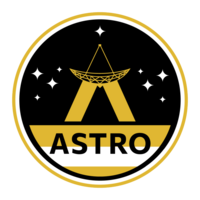PARKES OBSERVATORY: AUSTRALIA'S GATES TOWARDS THE STARS
OCTOBER 11th 2024 I Konstantinos-Christos Giouroukalis
“Two things fill the mind with ever-increasing wonder and awe — the starry heavens above me and the moral law within me.”
–Immanuel Kant
–Immanuel Kant
Located in the heart of New South Wales, the Parkes Observatory is a symbol of astronomical discovery and innovation. Officially known as the 'Parkes Radio Telescope', it has been a cornerstone of radio astronomy since its inception in 1961. Often affectionately referred to as 'The Dish', the 64-meter diameter radio telescope, situated near the rural town of Parkes, is a testament to Australia’s significant role in space exploration and the study of the universe.
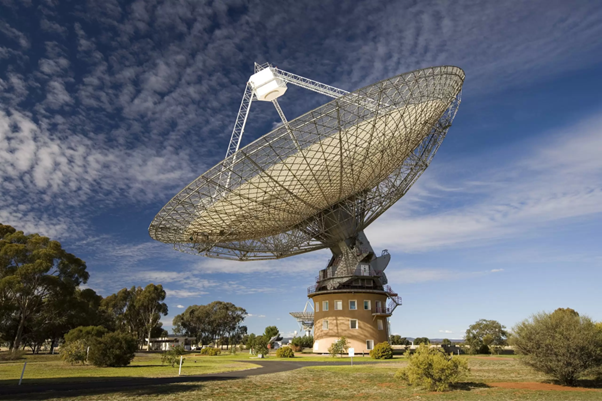
Planning and construction
The Parkes Observatory was from the outset an ambitious project. Designed at a time when radio astronomy was experiencing rapid growth, it was built to be one of the largest and most capable radio telescopes in the world. The idea was born from Dr. Taffy Bowen, an Australian radio physicist, and British engineer Barnes Wallis, known for designing the 'bouncing bomb' during World War II. Together with the Commonwealth Scientific and Industrial Research Organisation (CSIRO), they aimed to create a telescope that could observe deep into space and collect radio waves from distant celestial bodies.
The construction of the dish was a significant technical achievement. The enormous parabolic mirror, 64 meters in diameter, was designed with maximum precision to ensure the greatest possible accuracy in observations. Its surface is made of perforated aluminum panels, each aligned with absolute precision to maximize the collection of radio waves. A key feature of the design is that the dish can tilt and rotate 360 degrees, making it extremely versatile for tracking objects across the sky. Its structure was so well designed that, despite its age, it remains one of the most sensitive radio telescopes in operation today.
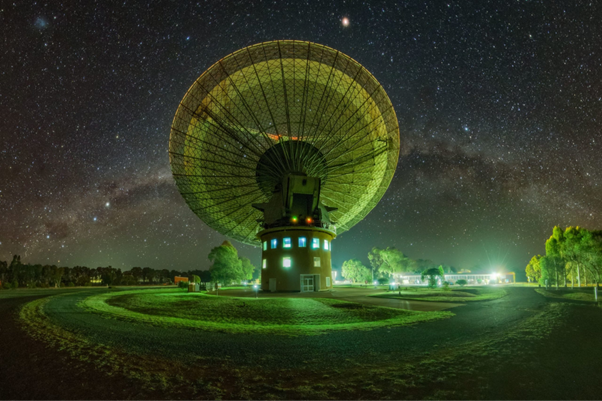
A legacy of discoveries
The Parkes Observatory has contributed to many astronomical discoveries since its establishment. Its most iconic moment came in 1969, when it played a crucial role in the live transmission of images from the Apollo 11 moon landing. Although NASA facilities in the U.S. were also receiving data, weather conditions and technical difficulties made it necessary to receive signals from Parkes. For more than two hours, the observatory provided clear and stable transmission of Neil Armstrong's first steps on the Moon, which were watched by over 600 million people worldwide. This historic contribution was immortalized in the Australian film 'The Dish' from 2000, which showcased Parkes' undeniable role in this global event.
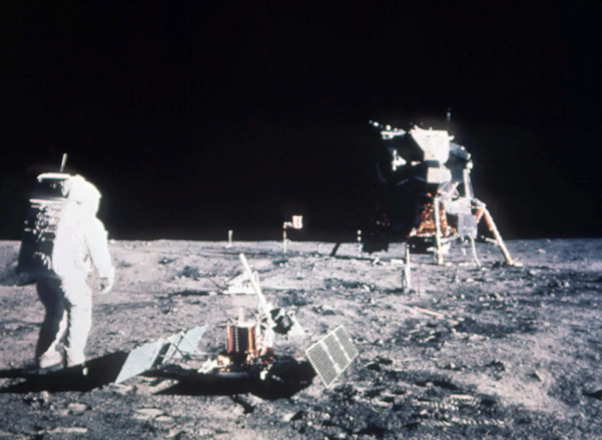
Scientific contributions
Beyond its fame from the Apollo missions, the Parkes Observatory has made significant contributions to scientific research in radio astronomy. Over the years, it has played a central role in the discovery and study of pulsars, quasars, and other distant cosmic phenomena. Pulsars—intensely magnetized, rotating neutron stars that emit beams of radiation—were one of the first fields of study at Parkes, and the observatory has since discovered more pulsars than any other telescope in the world.
The observatory has also participated in the Search for Extraterrestrial Intelligence (SETI), scanning the sky for potential signals from alien civilizations. While no definitive signals have been detected, Parkes has helped improve the techniques of this ongoing research.
Collaborations with other observatories around the world have played a central role in its success. The Parkes Telescope often participates in Very Long Baseline Interferometry (VLBI), where it collaborates with telescopes worldwide to create a virtual telescope the size of the Earth. This method allows astronomers to observe celestial objects with unprecedented detail.

The double pulsar system PSR J0737-3039 discovered by Parkes observatory
The Parkes radio telescope today
Today, the Parkes Radio Telescope continues to operate at the forefront of scientific research. Despite its age, the observatory remains a state-of-the-art facility, thanks to numerous upgrades. The dish has been equipped with modern instruments, such as an ultra-wideband receiver, which significantly enhances its sensitivity and allows for the collection of more detailed and accurate data from space.
One of the most exciting areas of research at Parkes today is the study of Fast Radio Bursts (FRBs), short but extremely powerful bursts of energy that have captured astronomers' interest since their discovery. Parkes was the first telescope to detect these bursts, and its observations have helped advance the study of these enigmatic signals, providing clues about their origins from distant galaxies.
Additionally, the Parkes Observatory plays a crucial role in the Square Kilometer Array (SKA) project, an international effort to construct the largest and most sensitive network of radio telescopes in the world. Once completed, the SKA will enable astronomers to map the sky with unparalleled detail, providing new insights into dark matter, the evolution of galaxies, and the large-scale structure of the universe.
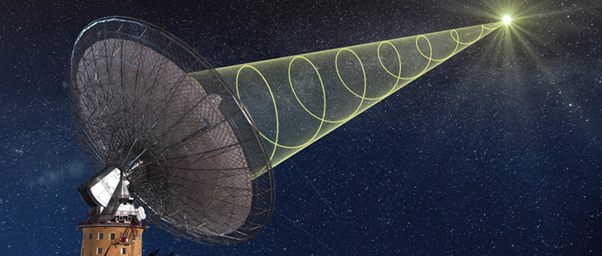
Public engagement and tourism
The Parkes Observatory is more than a scientific marvel; it is also an important tourist destination in Australia. The visitor center offers interactive exhibits on radio astronomy, the history of the telescope, and its role in the Apollo missions. Visitors can watch the dish in action as it moves and tracks celestial objects, providing a firsthand look at the science behind the mysteries of the universe.
Parkes also hosts several public events throughout the year, such as AstroFest, which invites people of all ages to experience astronomy up close. The festival includes telescope observations, educational talks, and activities that engage the audience with the science of space.
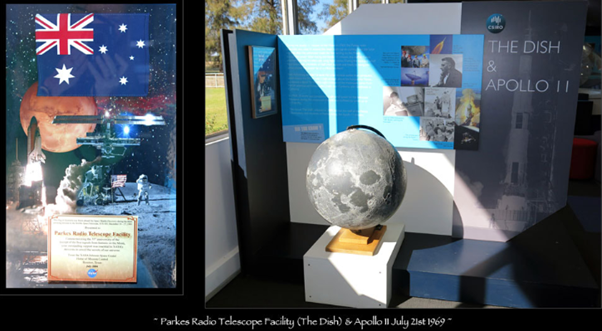
Conclusion
For over six decades, the Parkes Observatory has been a beacon of scientific achievement and international collaboration. Its groundbreaking contributions to radio astronomy have expanded our understanding of the universe, from the discovery of pulsars to its role in investigating mysterious phenomena like Fast Radio Bursts. Its vital role in the transmission of the Apollo 11 moon landing has also established its place in the history of space exploration.
As technology continues to evolve, the Parkes Observatory adapts to remain a leader in astronomical research, proving that even from a quiet corner of Australia, it is possible to reach the most distant corners of the universe.

Scientific Review: Konstantinos Karathanas
Editorial Review: Marilenia Zoi
Translation: Panagiota Isaak
Editorial Review: Marilenia Zoi
Translation: Panagiota Isaak
